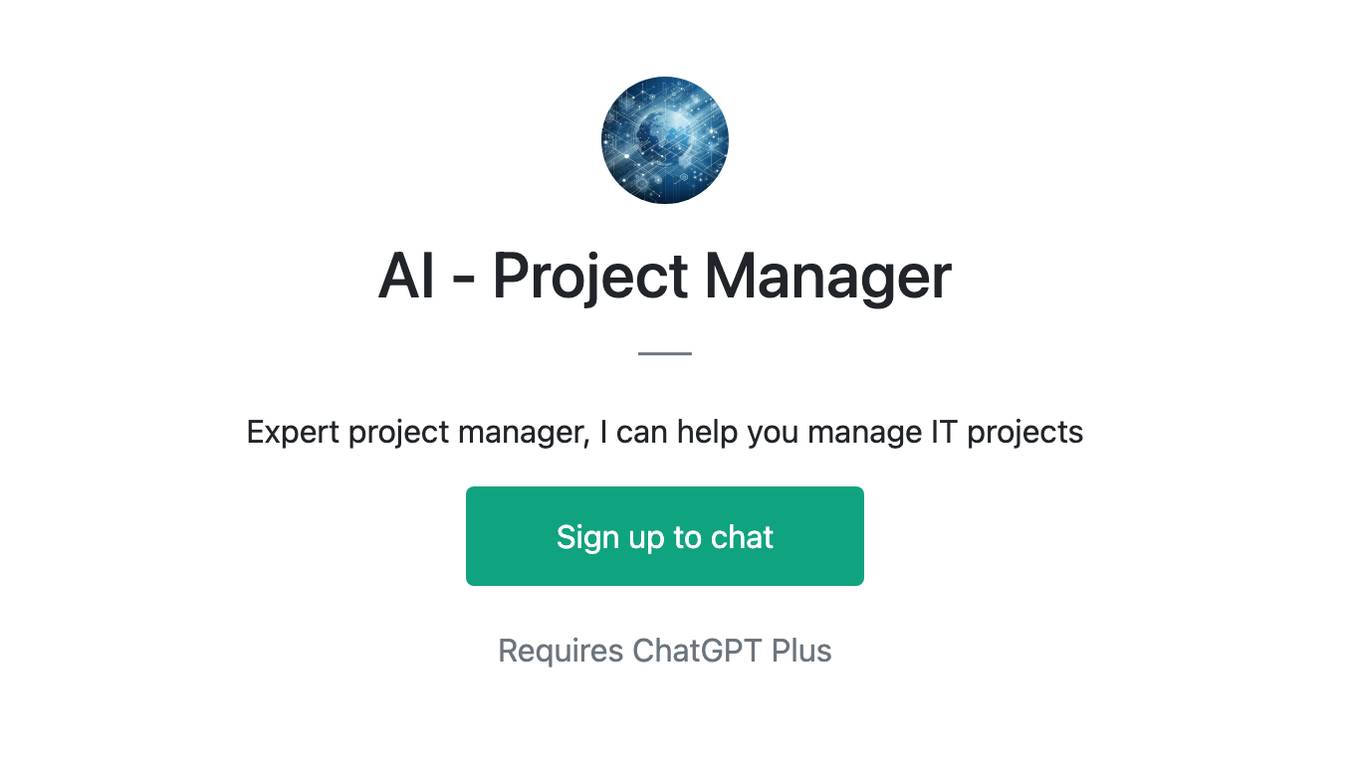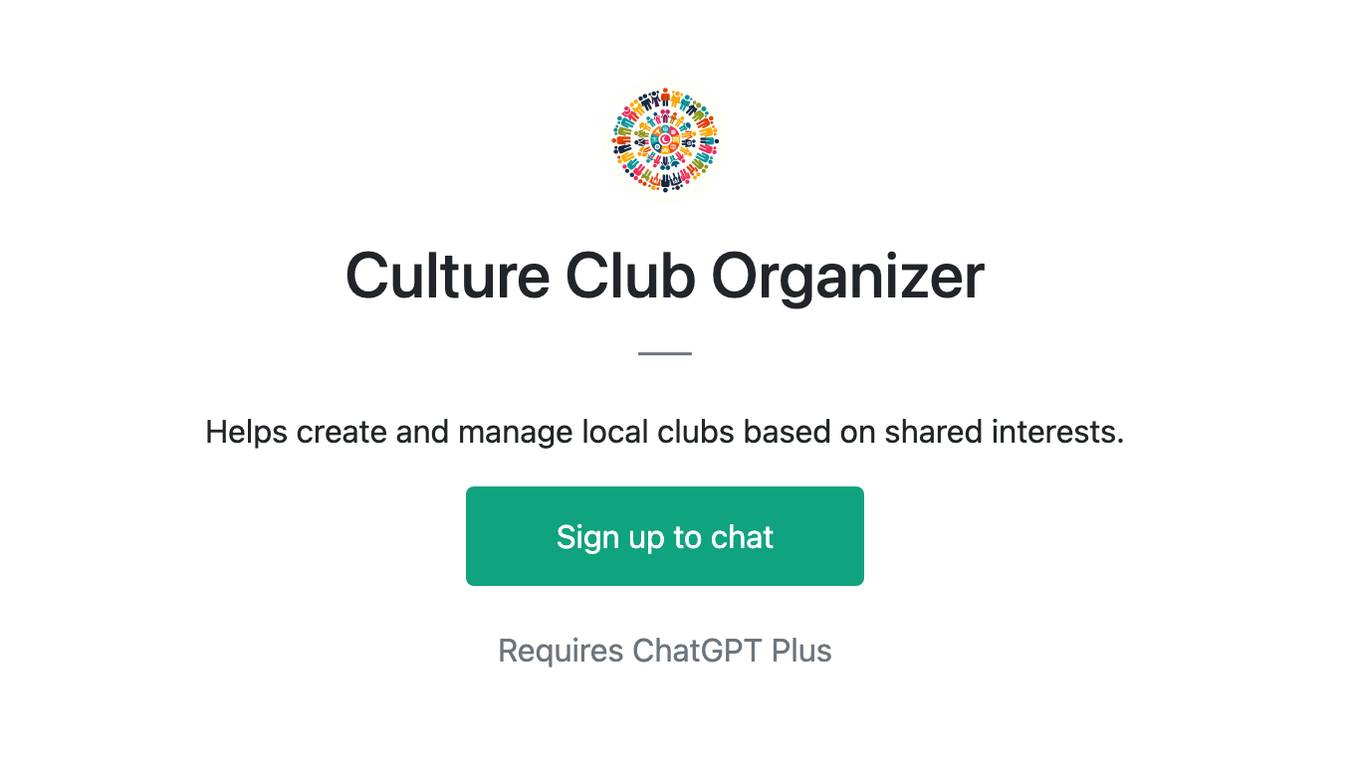Best AI tools for< Manage Embeddings >
20 - AI tool Sites
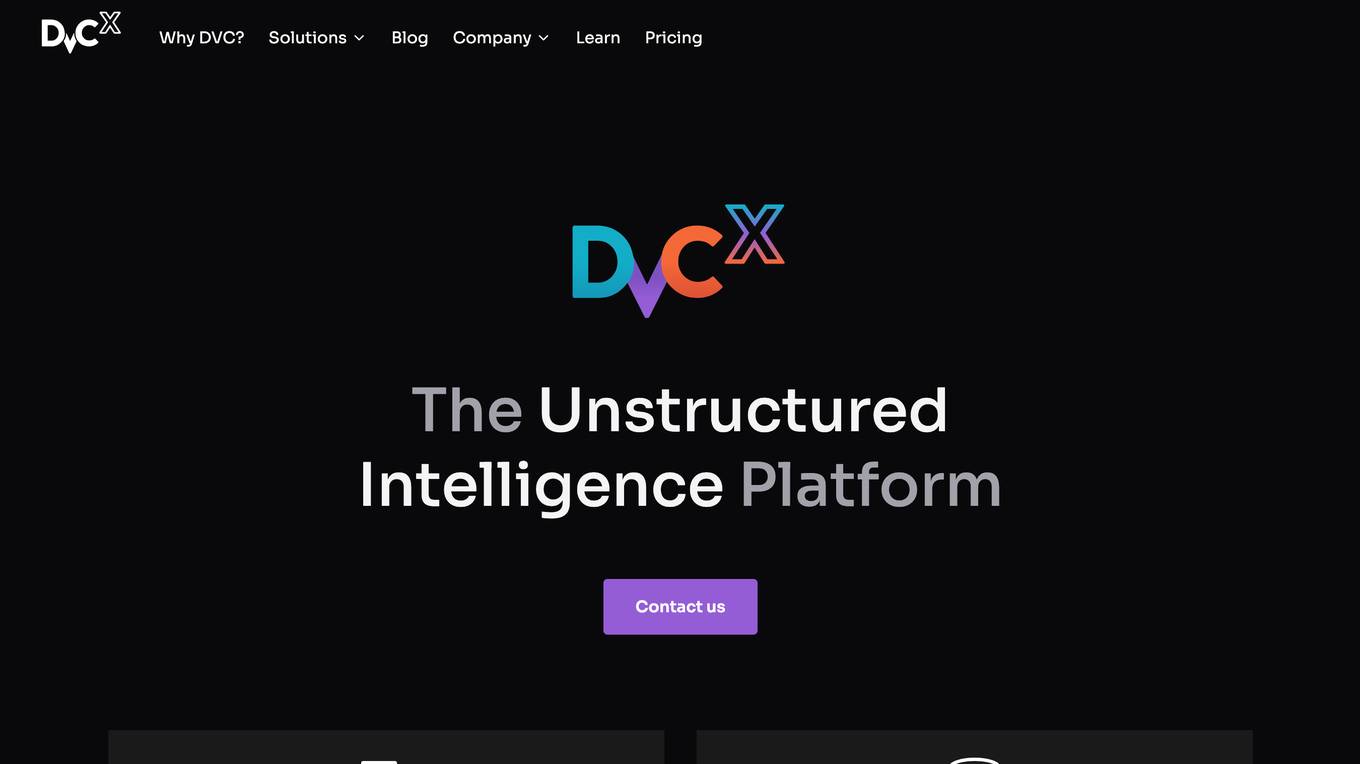
DVC
DVC is an open-source platform for managing machine learning data and experiments. It provides a unified interface for working with data from various sources, including local files, cloud storage, and databases. DVC also includes tools for versioning data and experiments, tracking metrics, and automating compute resources. DVC is designed to make it easy for data scientists and machine learning engineers to collaborate on projects and share their work with others.
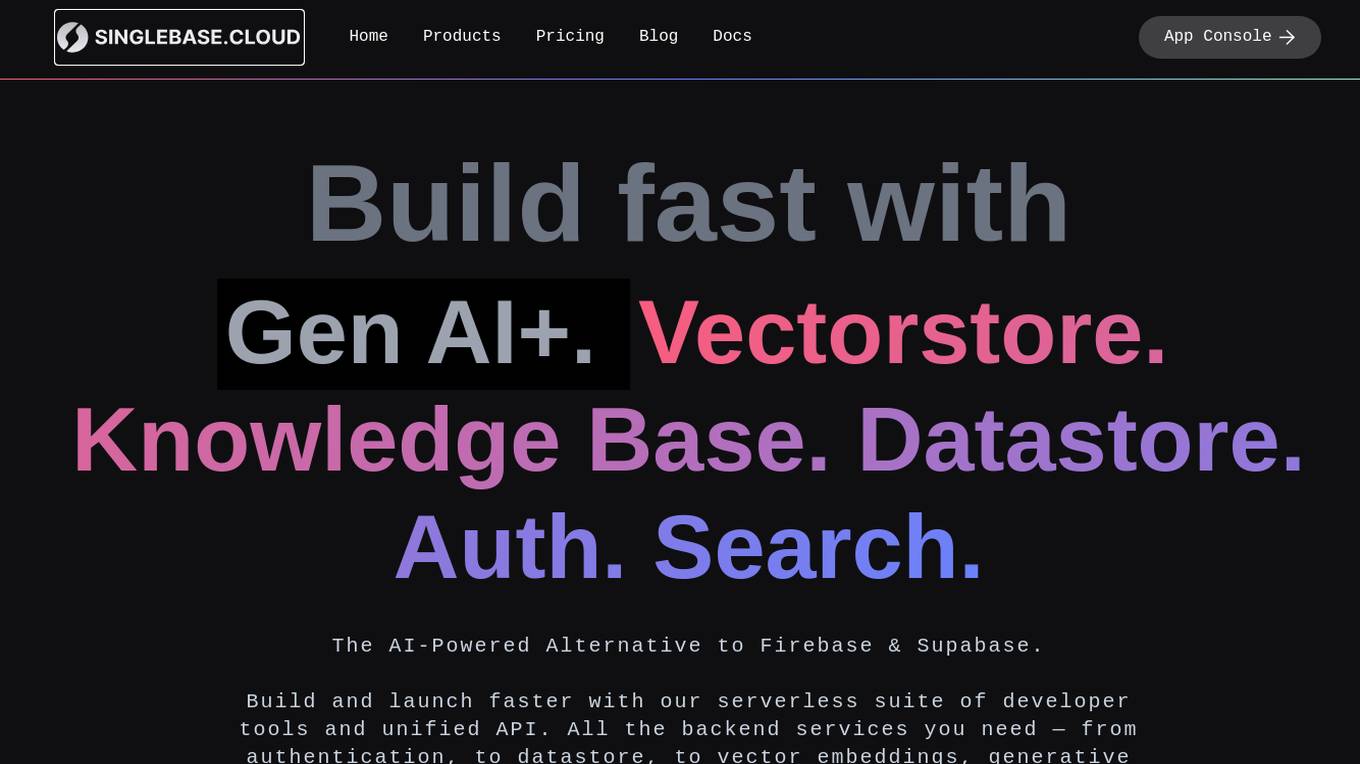
Singlebase
Singlebase.cloud is an AI-powered platform that serves as an alternative to Firebase and Supabase. It offers a comprehensive suite of tools and services to facilitate faster development and deployment through a unified API. The platform includes features such as Vector Database, NoSQL Database, Vector Embeddings, Generative AI, RAG, Knowledge Base, File storage, and Authentication, catering to a wide range of development needs.
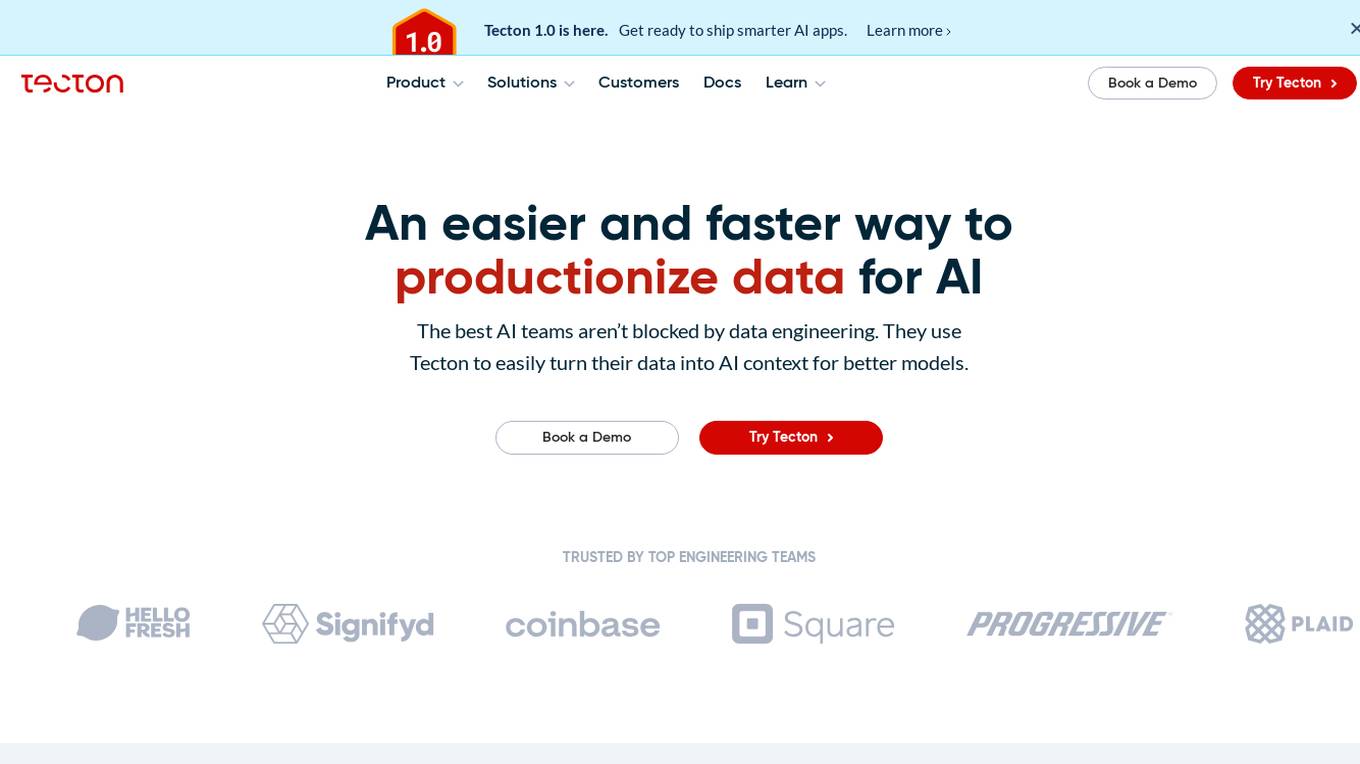
Tecton
Tecton is an AI data platform that helps build smarter AI applications by simplifying feature engineering, generating training data, serving real-time data, and enhancing AI models with context-rich prompts. It automates data pipelines, improves model accuracy, and lowers production costs, enabling faster deployment of AI models. Tecton abstracts away data complexity, provides a developer-friendly experience, and allows users to create features from any source. Trusted by top engineering teams, Tecton streamlines ML delivery processes, improves customer interactions, and automates release processes through CI/CD pipelines.
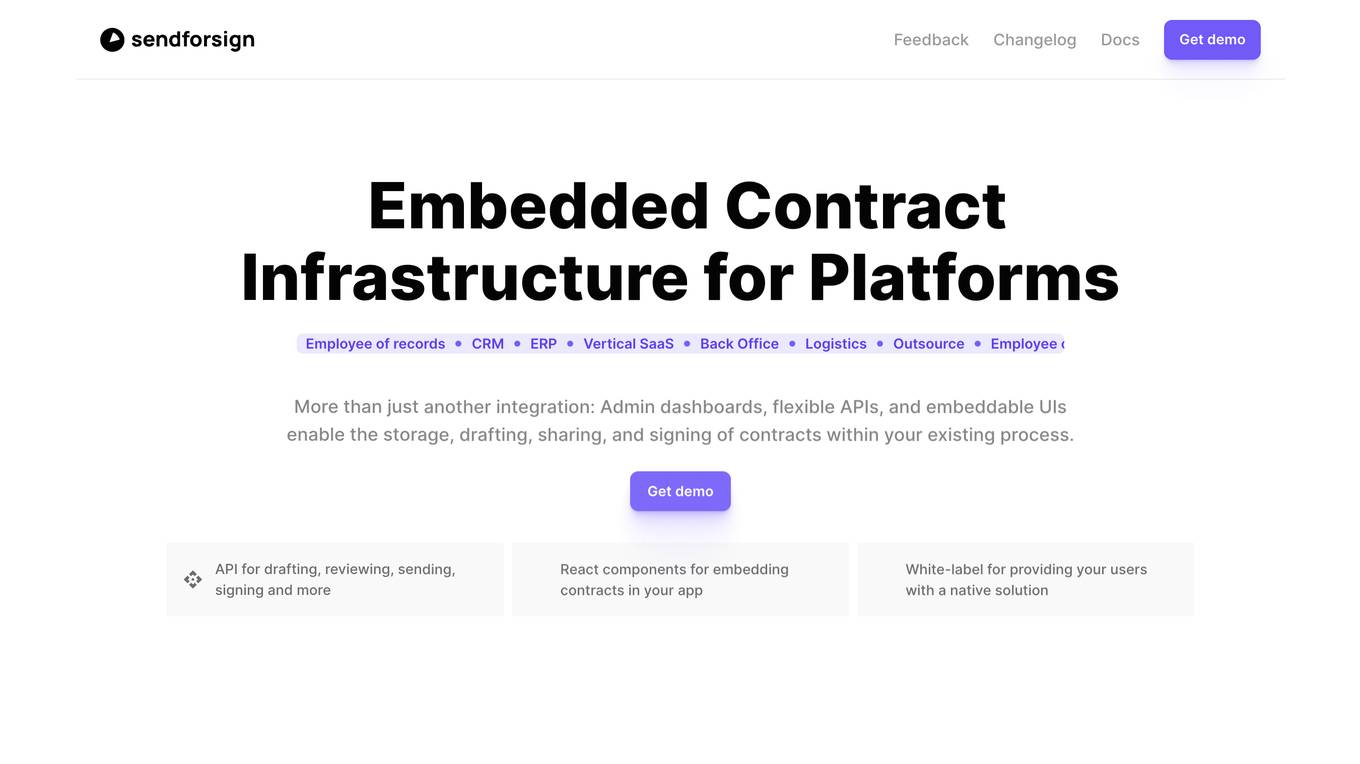
Sendforsign
Sendforsign is an AI-powered platform that offers eSignature, API, Legal AI, and Embeddings services. It allows users to streamline agreements, integrate contracts into UI, enhance platforms with contract workflows, and automate contract management. With features like AI Automation, Contract Builder, Embedded Contracts, and eSign API, Sendforsign simplifies the contract process and makes it easy to understand. The platform is trusted by businesses worldwide for its seamless integration and user-friendly experience.
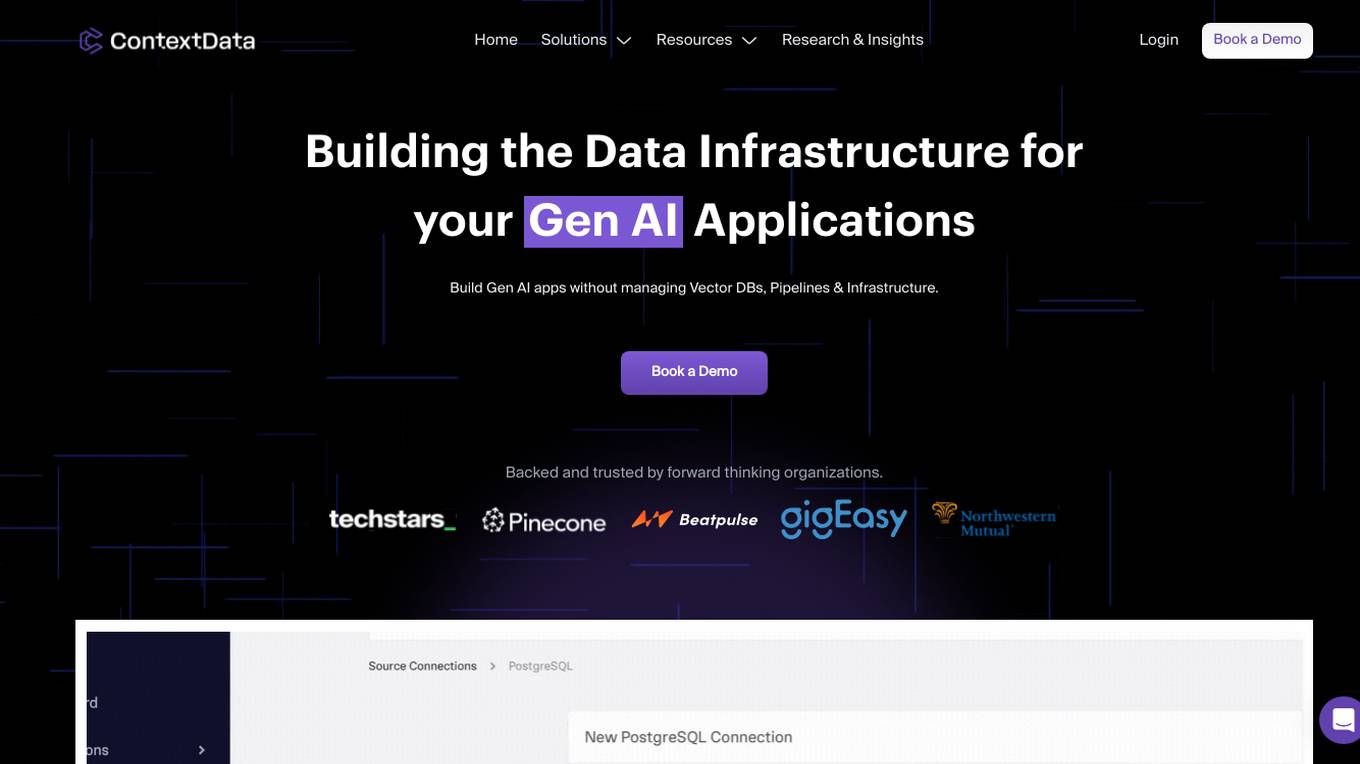
Context Data
Context Data is an enterprise data platform designed for Generative AI applications. It enables organizations to build AI apps without the need to manage vector databases, pipelines, and infrastructure. The platform empowers AI teams to create mission-critical applications by simplifying the process of building and managing complex workflows. Context Data also provides real-time data processing capabilities and seamless vector data processing. It offers features such as data catalog ontology, semantic transformations, and the ability to connect to major vector databases. The platform is ideal for industries like financial services, healthcare, real estate, and shipping & supply chain.
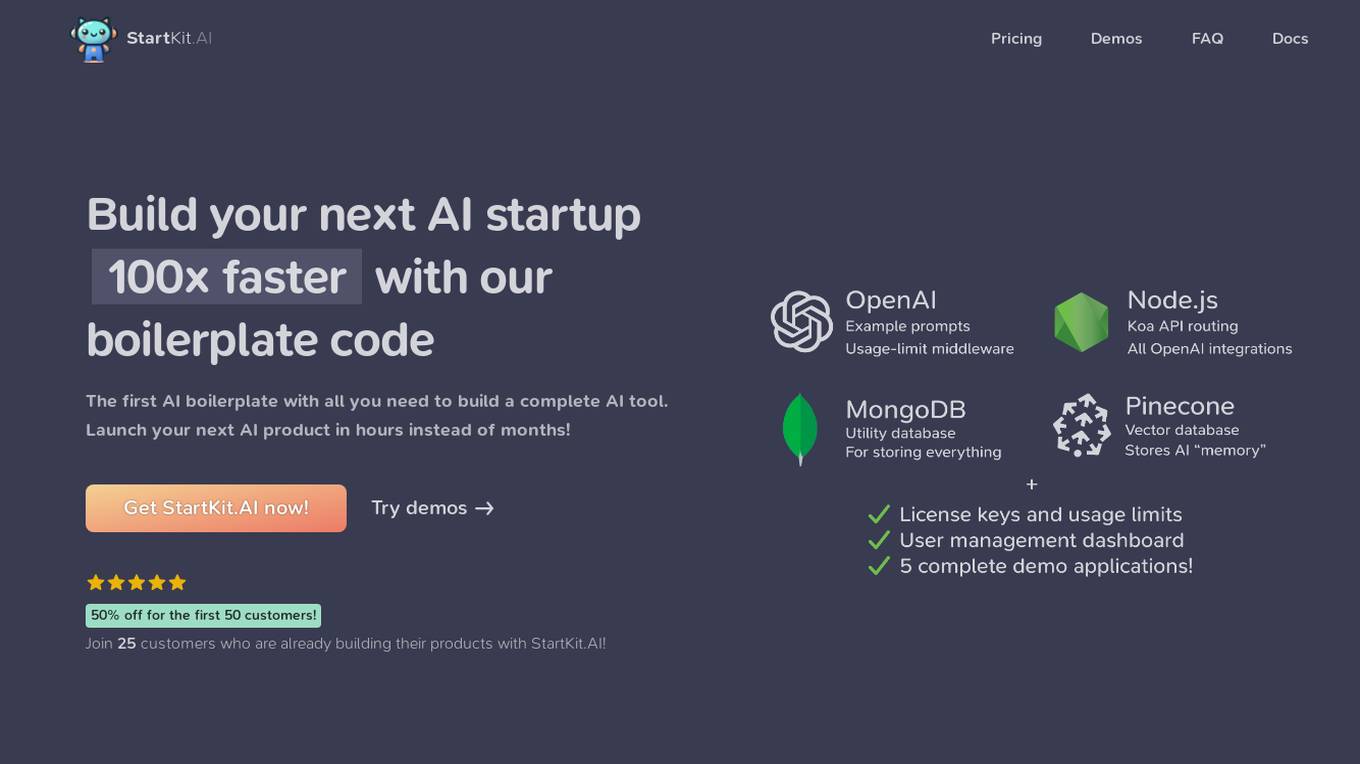
StartKit.AI
StartKit.AI is a boilerplate code for AI products that helps users build their AI startups 100x faster. It includes pre-built REST API routes for all common AI functionality, a pre-configured Pinecone for text embeddings and Retrieval-Augmented Generation (RAG) for chat endpoints, and five React demo apps to help users get started quickly. StartKit.AI also provides a license key and magic link authentication, user & API limit management, and full documentation for all its code. Additionally, users get access to guides to help them get set up and one year of updates.
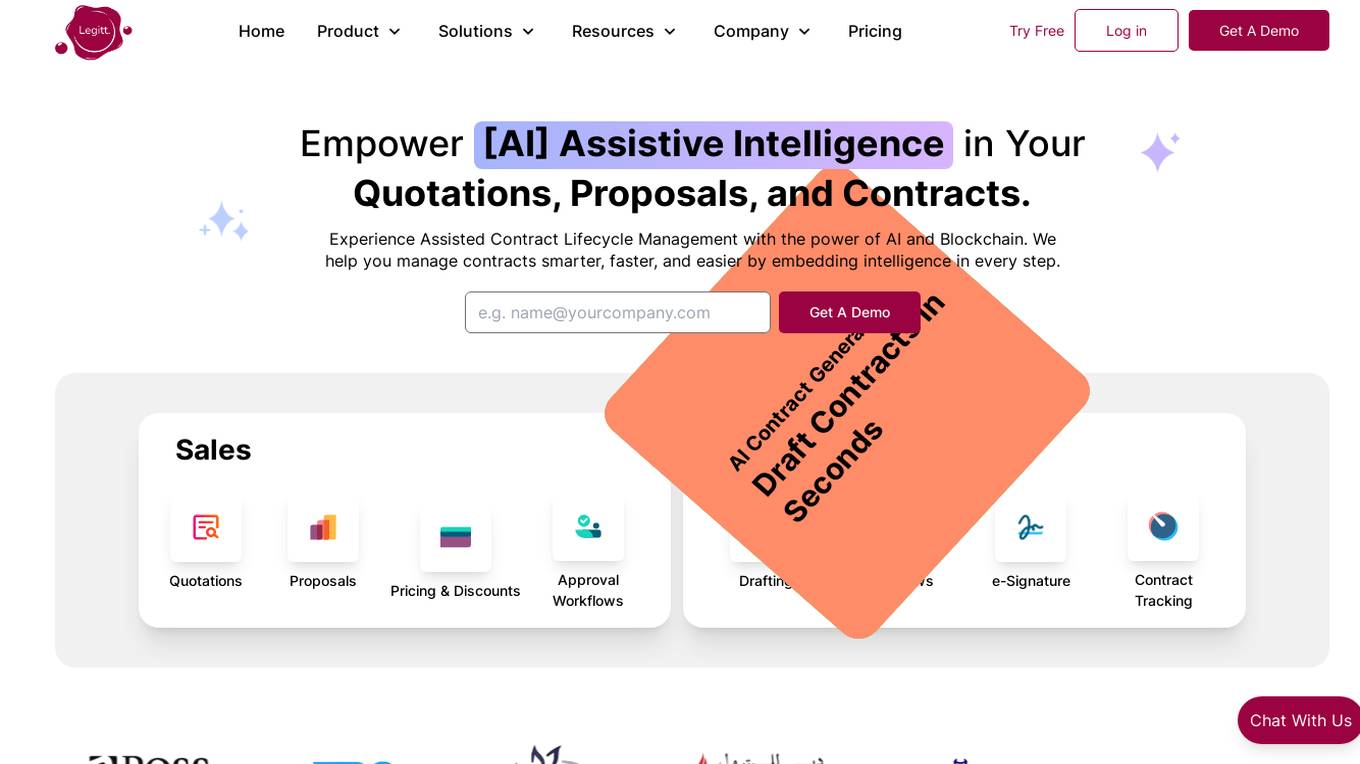
Legitt AI
Legitt AI is an AI-powered Contract Lifecycle Management platform that offers a comprehensive solution for managing contracts at scale. It combines automation and intelligence to revolutionize contract management, ensuring efficiency, accuracy, and compliance with legal standards. The platform streamlines contract creation, signing, tracking, and management processes by embedding intelligence in every step. Legitt AI enhances contract review processes, contract tracking, and contract intelligence at scale, providing users with insights, recommendations, and automated workflows. With robust security measures, scalable infrastructure, and integrations with popular business tools, Legitt AI empowers businesses to manage contracts with precision and efficiency.

Gista
Gista is an AI-powered conversion agent that helps businesses turn more website visitors into leads. It is equipped with knowledge about your products and services and can offer value props, build an email list, and more. Gista is easy to set up and use, and it integrates with your favorite platforms.
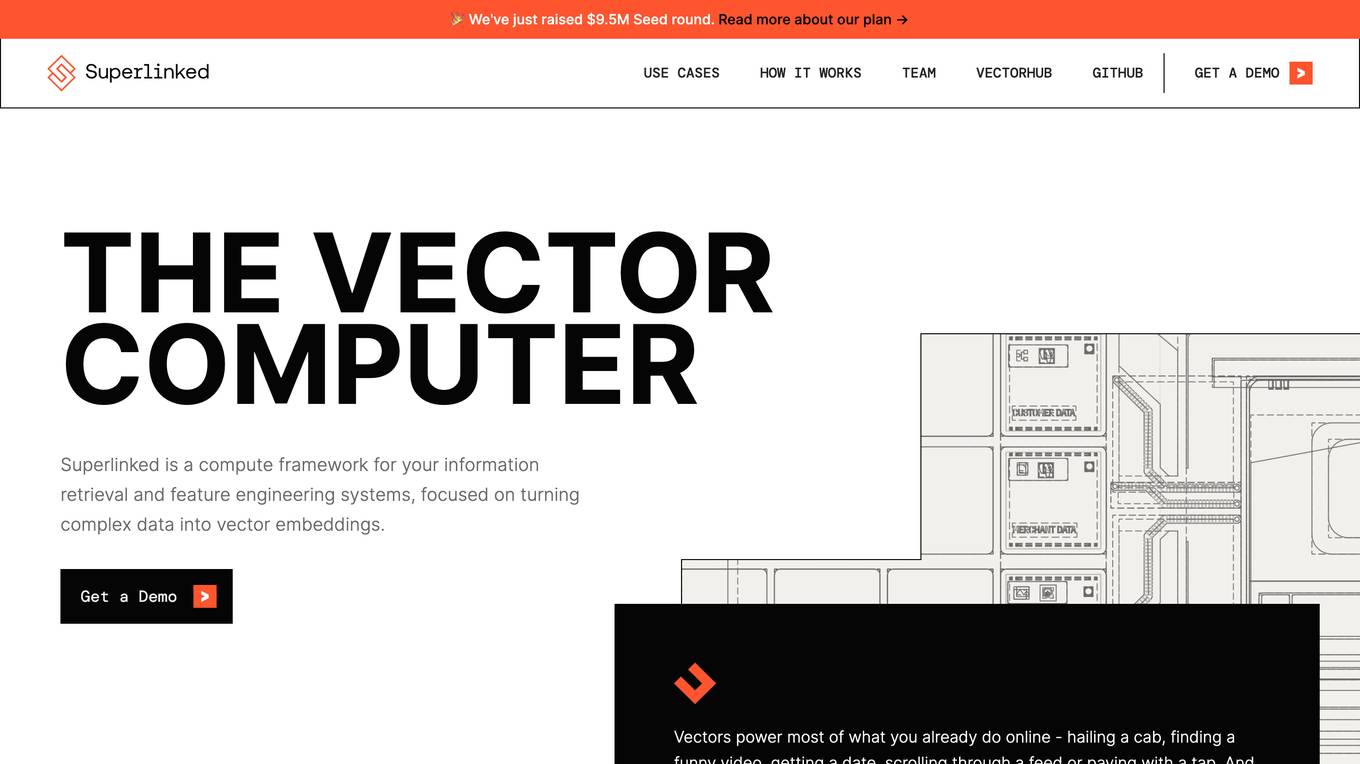
Superlinked
Superlinked is a compute framework for your information retrieval and feature engineering systems, focused on turning complex data into vector embeddings. Vectors power most of what you already do online - hailing a cab, finding a funny video, getting a date, scrolling through a feed or paying with a tap. And yet, building production systems powered by vectors is still too hard! Our goal is to help enterprises put vectors at the center of their data & compute infrastructure, to build smarter and more reliable software.

Jina AI
Jina AI is a company that provides multimodal AI solutions for businesses and developers. Their products include embeddings, rerankers, and prompt engineering tools. Jina AI's mission is to make AI accessible and easy to use for everyone.
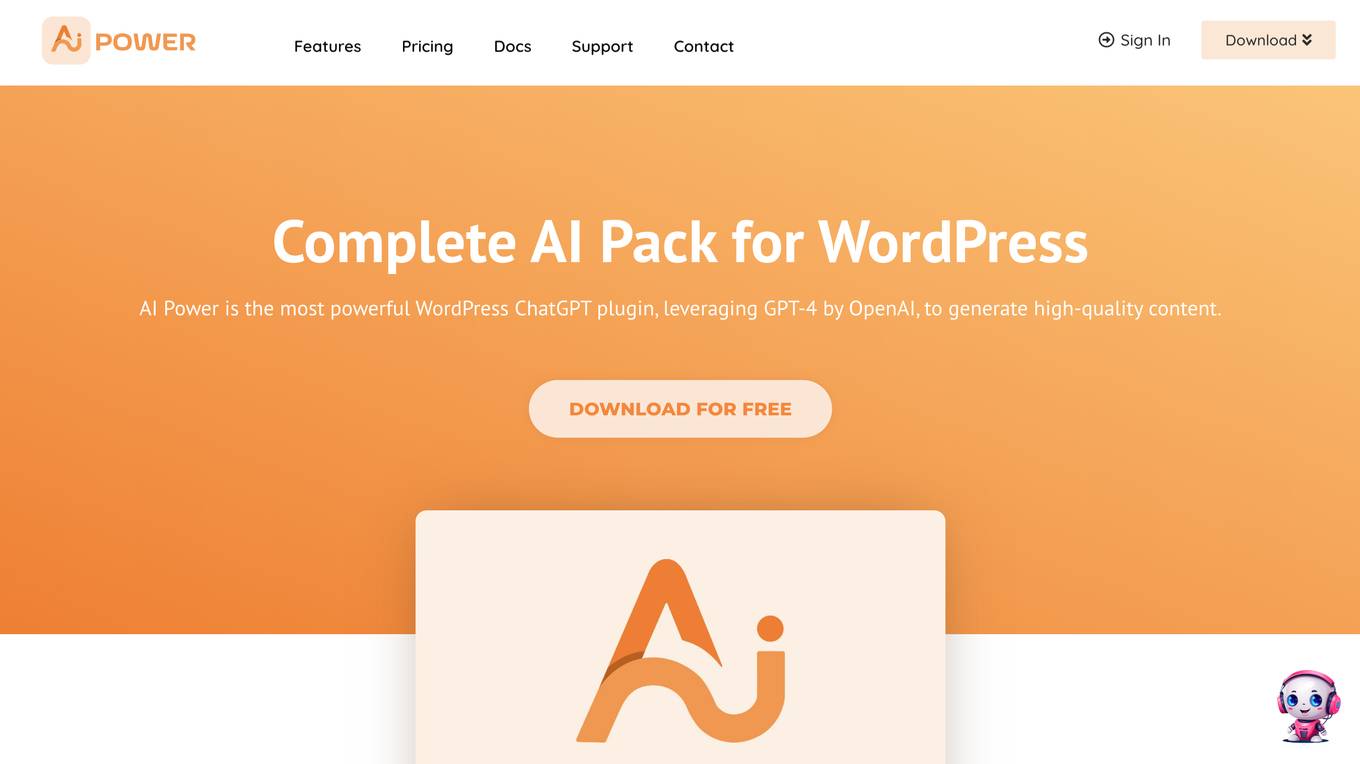
AI Power
GPT AI Power is a comprehensive AI plugin for WordPress that uses advanced technologies like GPT-3.5, GPT-4, and DaVinci to generate customizable content, images, forms, and more. Its features include an AI-powered Content Writer, Image Generator, ChatGPT for chatbot creation, WooCommerce integration, Embeddings, and more. With AI Power, you can optimize your content for search engines, experiment with GPT models using the Playground, and take advantage of its support for 40 languages.
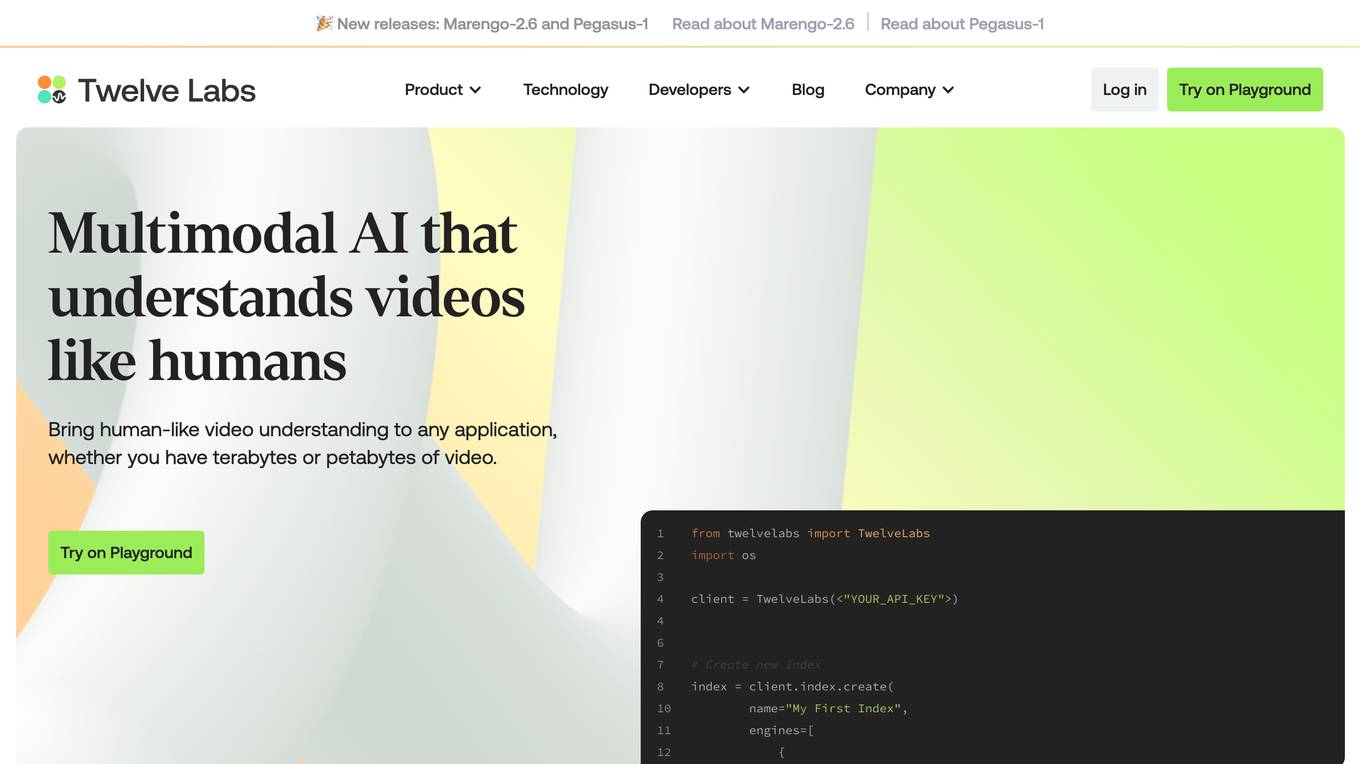
Twelve Labs
Twelve Labs is a cutting-edge AI tool that specializes in multimodal video understanding, allowing users to bring human-like video comprehension to any application. The tool enables users to search, generate, and embed video content with state-of-the-art accuracy and scalability. With the ability to handle vast video libraries and provide rich video embeddings, Twelve Labs is a game-changer in the field of video analysis and content creation.
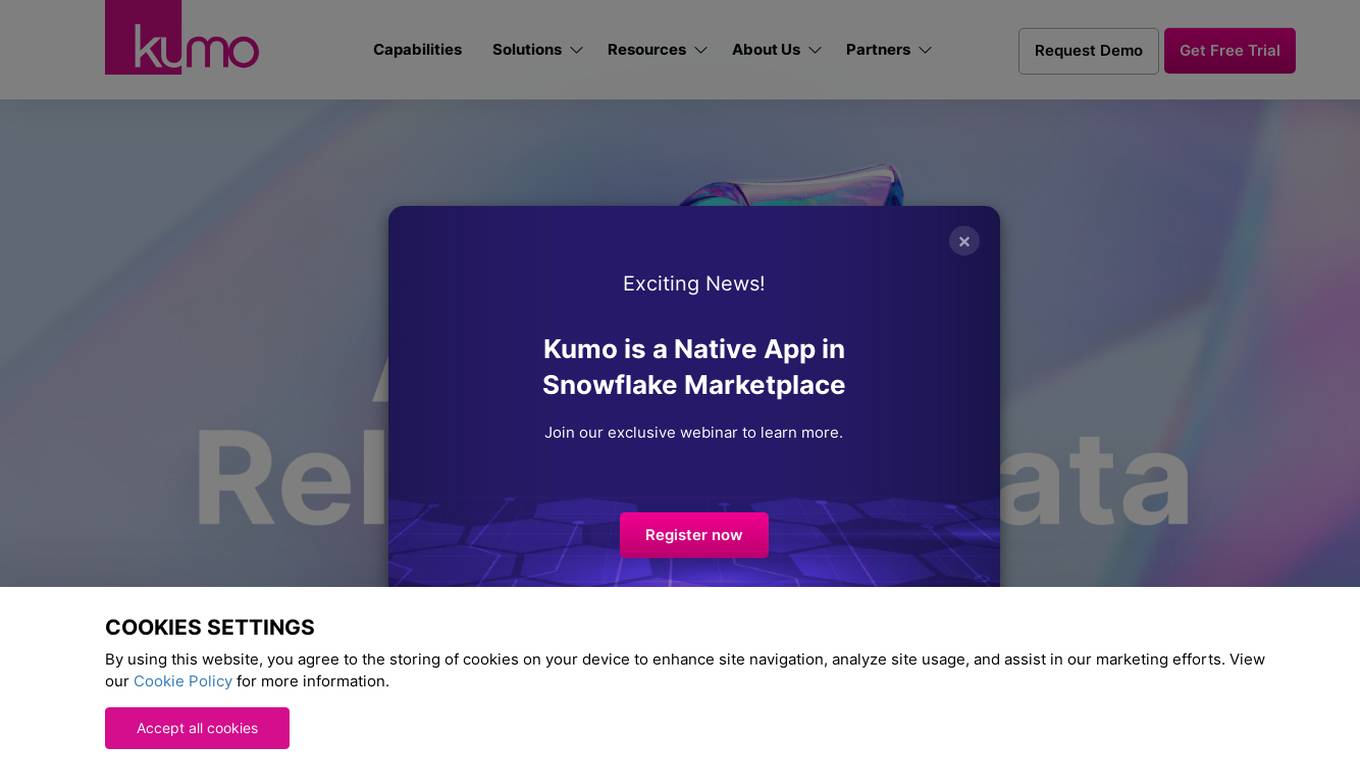
Kumo
Kumo is an AI-powered platform that helps businesses personalize customer experiences, acquire new customers, understand customer behavior, improve planning and monitoring, resolve data inconsistencies, fight fraud and abuse, detect money laundering, and empower data scientists with advanced techniques. It offers cutting-edge solutions for various AI and machine learning tasks, such as predictive modeling, anomaly detection, entity resolution, and graph embeddings. Kumo's capabilities are designed to enhance customer interactions, optimize marketing campaigns, and provide valuable insights for businesses across different industries.
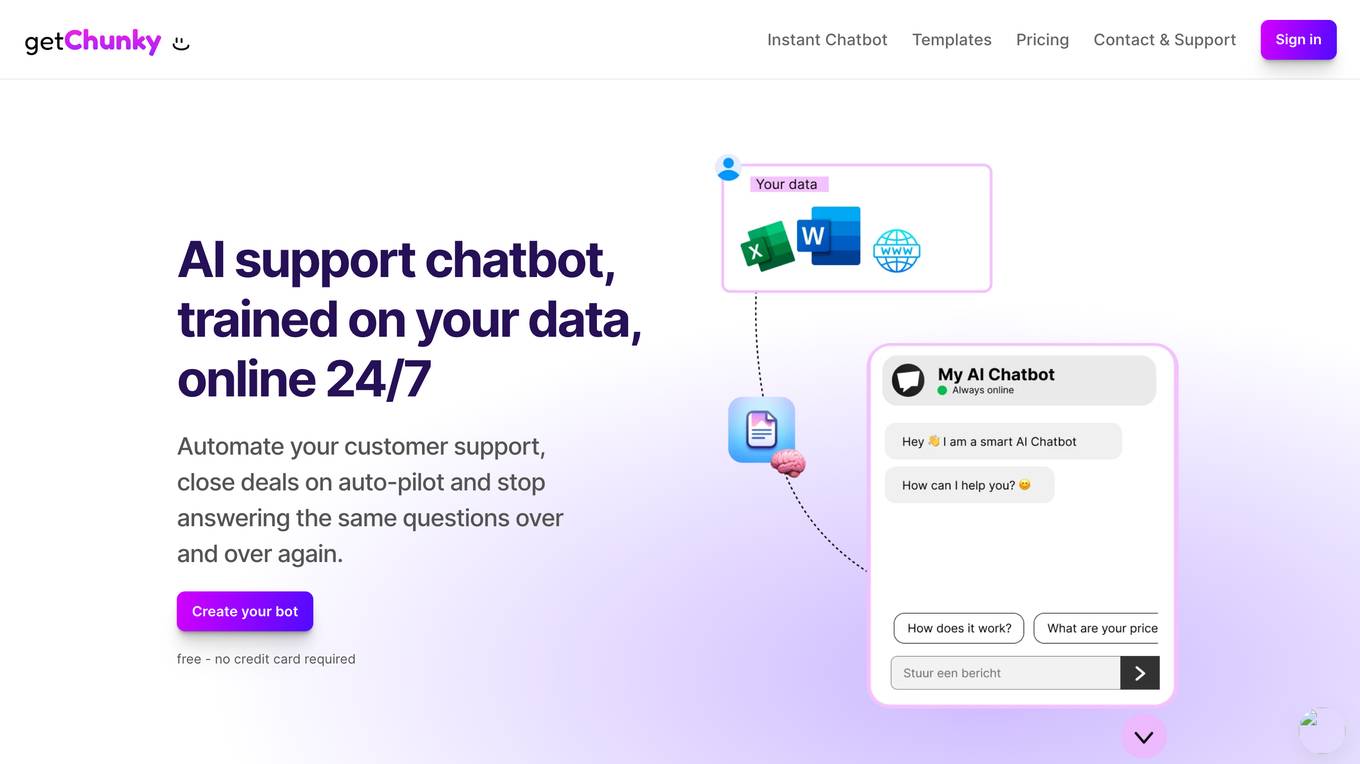
Chunky
Chunky is an AI chatbot builder that allows users to create human-like chatbots effortlessly. With Chunky, users can automate customer support, answer frequently asked questions, and save time by setting up their own AI-powered bot in just a few minutes. The platform offers a user-friendly experience with no coding required, integrated chatbot deployment on websites, and customization options for branding. Chunky utilizes the ChatGPT API and Embeddings provided by OpenAI to deliver smart chatbot interactions in close to 95 languages.

OvationCXM
OvationCXM is a Customer Experience Management (CXM) platform that helps businesses manage customer journeys, ecosystems, and AI. It provides tools to orchestrate customer relationships from beginning to end, connecting partners and AI to deliver smooth, AI-powered customer journeys. The platform offers features like designing and managing customer journeys in real-time, guiding CX across multiple providers, and embedding intelligence and automation. OvationCXM is used across various industries like Financial Services, Tech & Telecom, Healthcare, and Retail to drive deposits, retention, revenue, and personalized shopper experiences at scale.
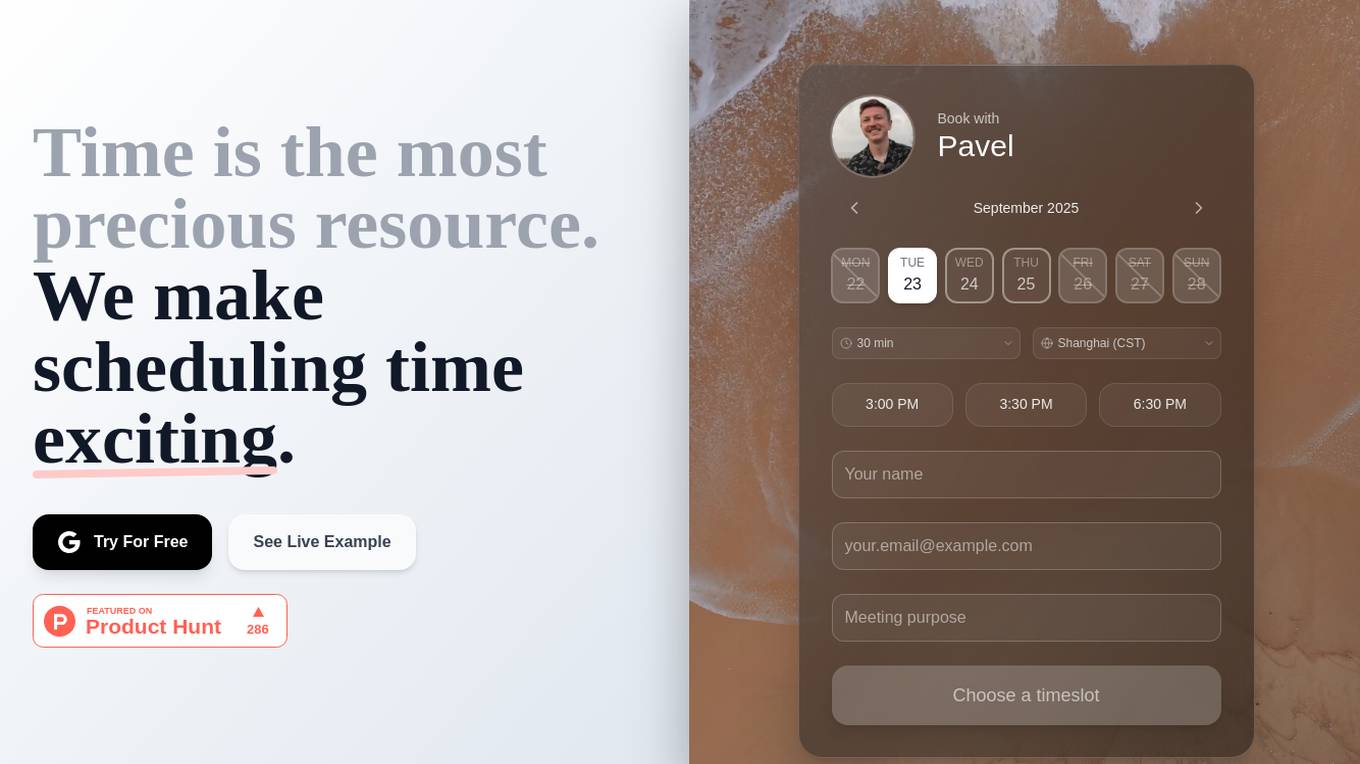
TimeTuna
TimeTuna.com is an AI-powered scheduling application designed for creative minds. It offers real-time bidirectional synchronization with Google Calendar, visual customization options, multiple meeting durations, and email automation. The application also provides features like website embedding, integration with Zoom and Microsoft Teams, group scheduling, priority management, calendar intelligence, and an autonomous assistant for efficient calendar management. TimeTuna aims to optimize time allocation, improve meeting effectiveness, and enhance goal alignment for founders, artists, designers, and agencies.
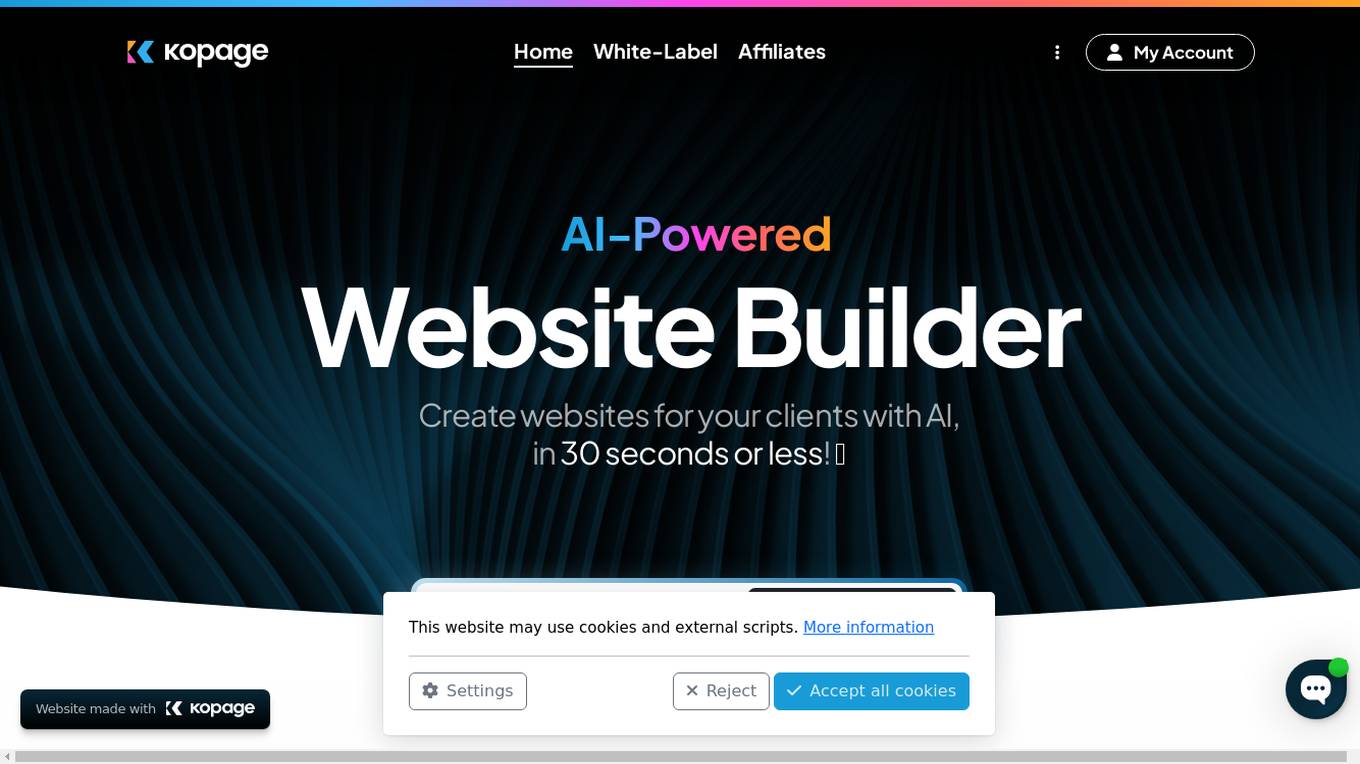
Kopage Website Studio
Kopage is a white-label AI website builder that allows users to create fully-featured websites for their clients in just 30 seconds or less. The platform offers an intuitive interface with drag-and-drop functionality, making website creation a breeze. With built-in SEO features, e-commerce capabilities, blog integration, and more, Kopage provides everything needed to launch a professional website. Users can easily customize their sites with hundreds of design options, including Google Fonts and color schemes. Additionally, Kopage offers advanced features such as private spaces, custom code embedding, analytics tracking, and multi-level menu structures.

Kinaxis
Kinaxis is an AI-infused supply chain orchestration platform that helps businesses master uncertainty and improve performance across their end-to-end supply chain. It delivers fast, intelligent, and proactive decision-making by embedding AI across the supply chain to connect data, align processes, automate actions, and learn from outcomes. Kinaxis offers solutions for supply chain orchestration, control tower, S&OP, demand planning, supply planning, inventory management, scheduling, order management, transportation, and returns management. The platform provides seamless synchronization, smart scenario modeling, adaptability, productivity enhancement, and comprehensive visibility into the supply chain.
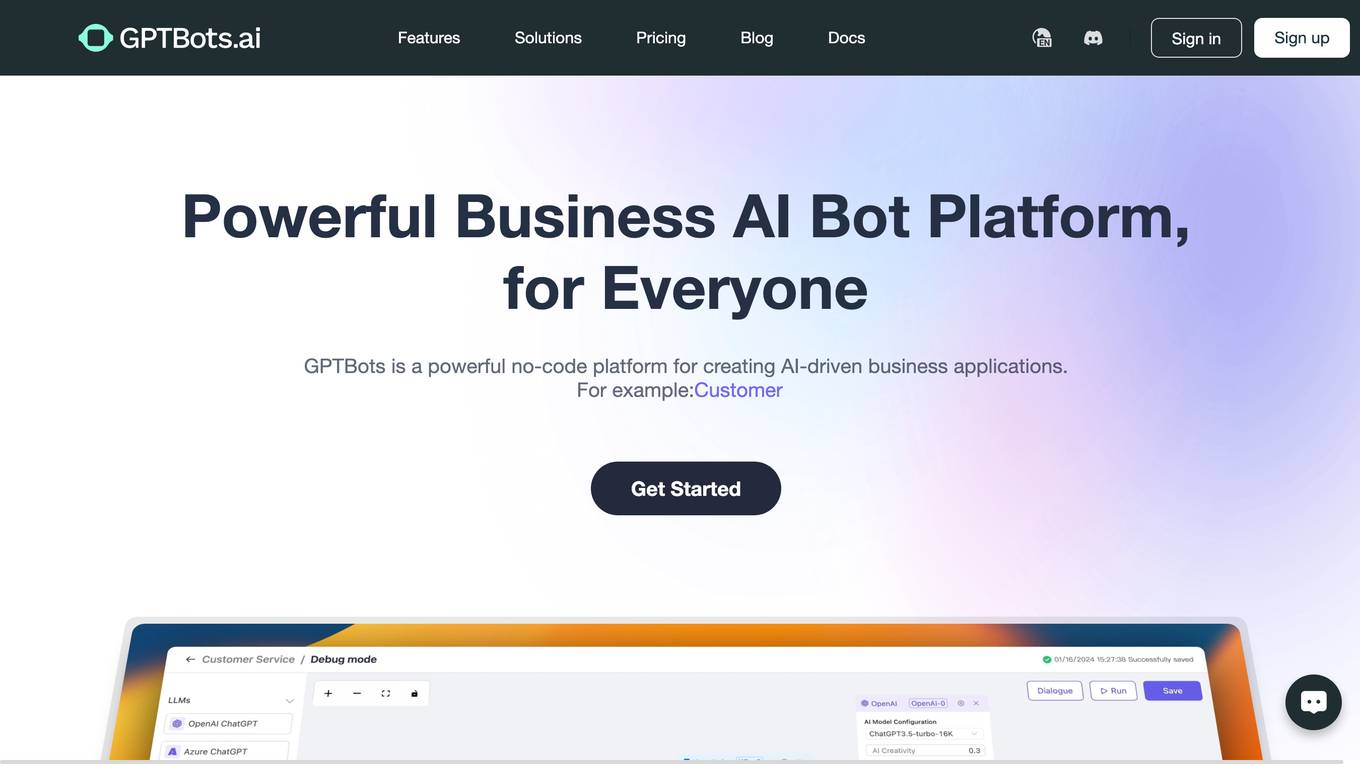
GPTBots
GPTBots.ai is a powerful no-code platform for creating AI-driven business applications. It seamlessly integrates large language models with organizational data, services, and workflows to empower AI bots in driving business growth. The platform allows users to build and train AI bots without coding experience, access best-practice AI bot templates, optimize and customize AI knowledge base, and adapt to various scenarios with intelligent agent bots. GPTBots supports diverse input types, offers versatile language models, enables seamless chatbot-human handoff, and provides robust API and SDK for embedding capabilities into products. Trusted by over 100k companies worldwide, GPTBots helps enterprises enhance customer service, leads generation, SEO writing, data analysis, and more.
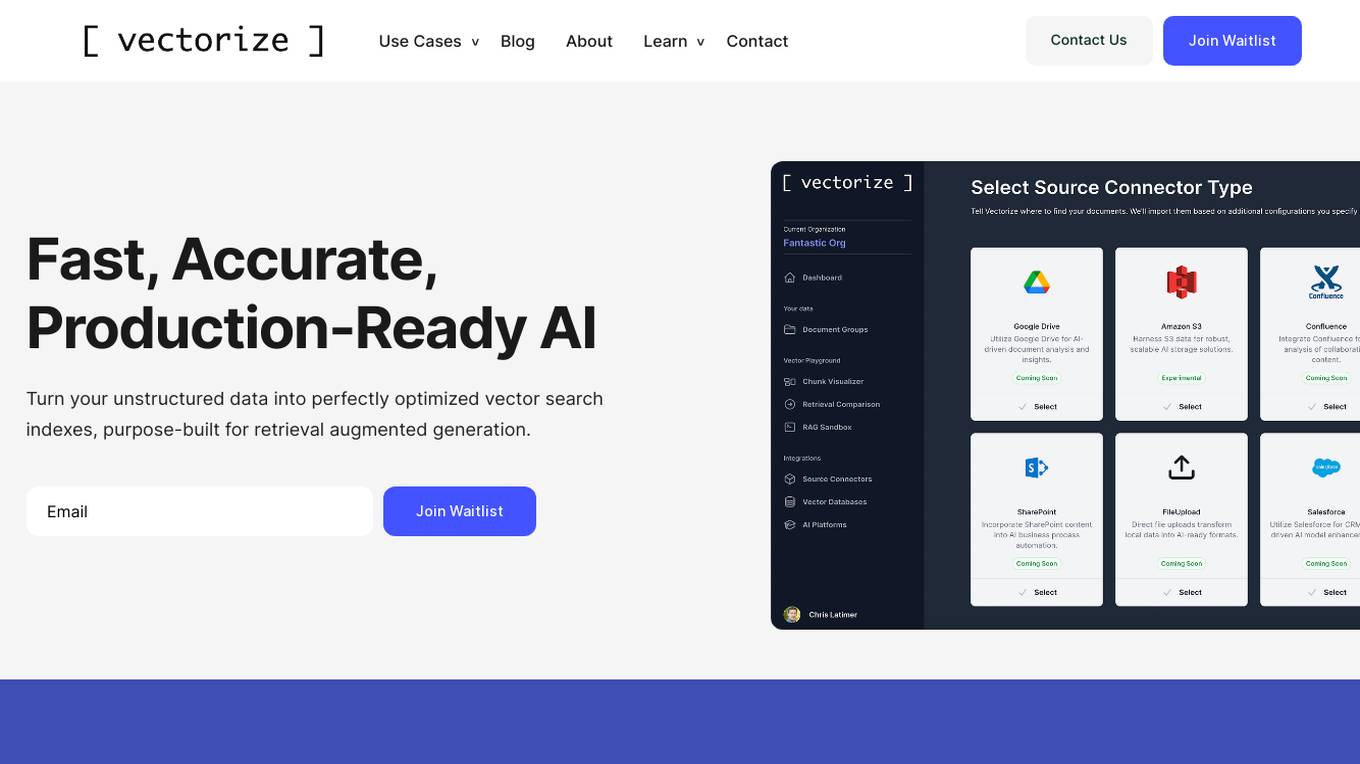
Vectorize
Vectorize is a fast, accurate, and production-ready AI tool that helps users turn unstructured data into optimized vector search indexes. It leverages Large Language Models (LLMs) to create copilots and enhance customer experiences by extracting natural language from various sources. With built-in support for top AI platforms and a variety of embedding models and chunking strategies, Vectorize enables users to deploy real-time vector pipelines for accurate search results. The tool also offers out-of-the-box connectors to popular knowledge repositories and collaboration platforms, making it easy to transform knowledge into AI-generated content.
1 - Open Source AI Tools
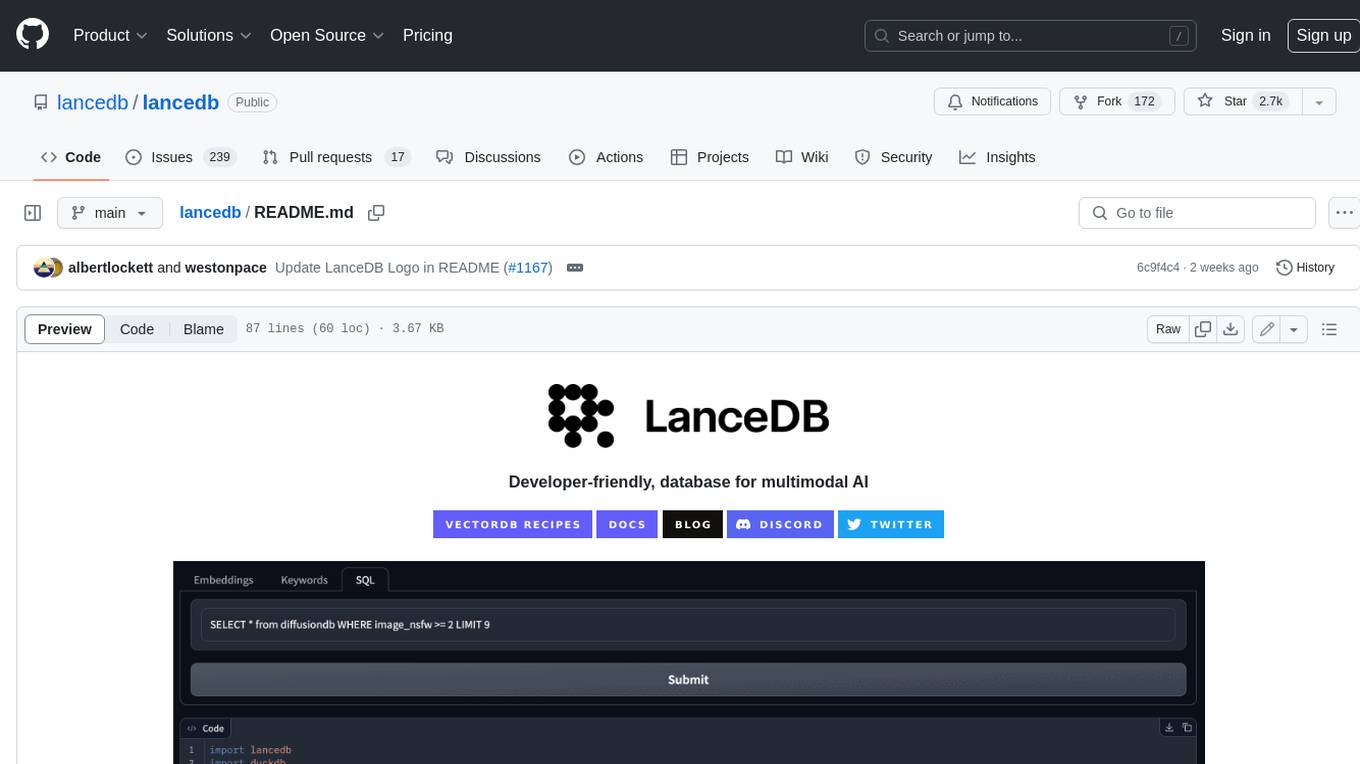
lancedb
LanceDB is an open-source database for vector-search built with persistent storage, which greatly simplifies retrieval, filtering, and management of embeddings. The key features of LanceDB include: Production-scale vector search with no servers to manage. Store, query, and filter vectors, metadata, and multi-modal data (text, images, videos, point clouds, and more). Support for vector similarity search, full-text search, and SQL. Native Python and Javascript/Typescript support. Zero-copy, automatic versioning, manage versions of your data without needing extra infrastructure. GPU support in building vector index(*). Ecosystem integrations with LangChain 🦜️🔗, LlamaIndex 🦙, Apache-Arrow, Pandas, Polars, DuckDB, and more on the way. LanceDB's core is written in Rust 🦀 and is built using Lance, an open-source columnar format designed for performant ML workloads.
20 - OpenAI Gpts
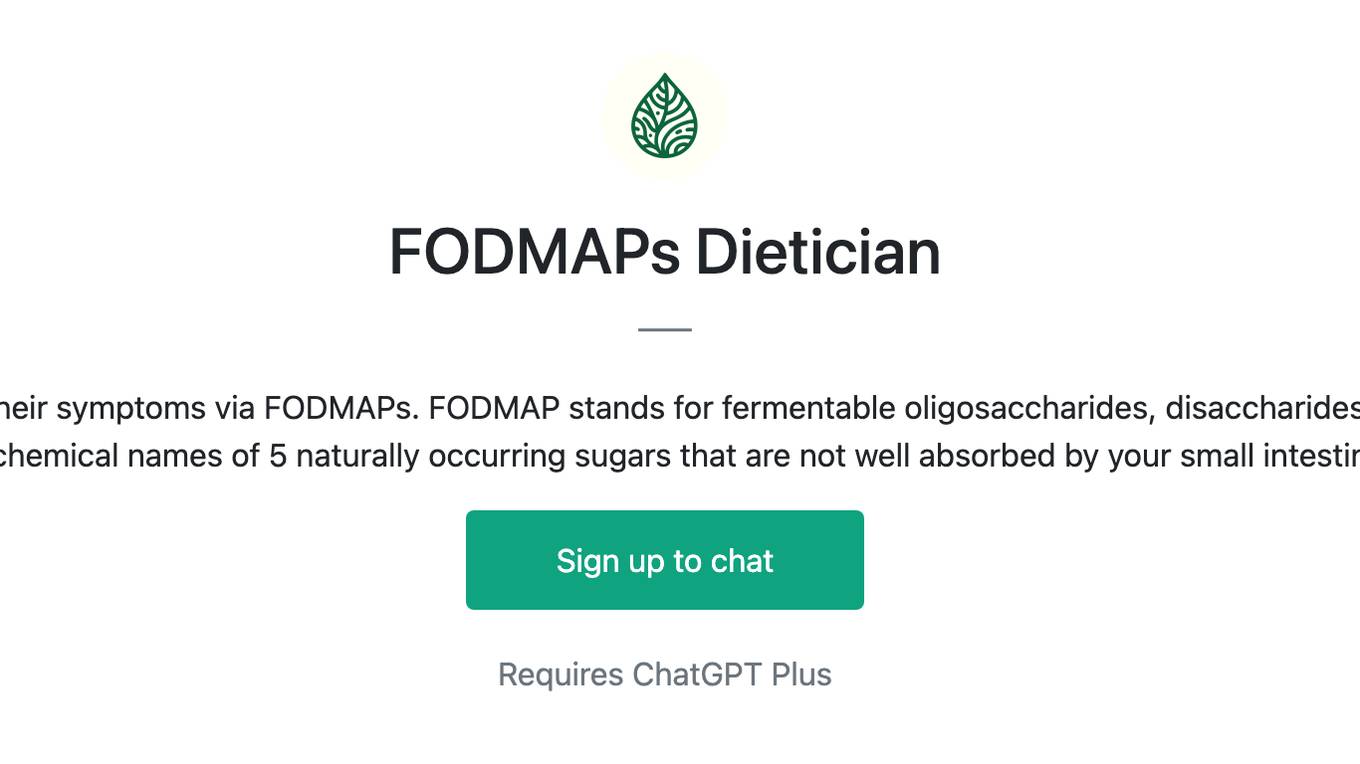
FODMAPs Dietician
Dietician that helps those with IBS manage their symptoms via FODMAPs. FODMAP stands for fermentable oligosaccharides, disaccharides, monosaccharides and polyols. These are the chemical names of 5 naturally occurring sugars that are not well absorbed by your small intestine.
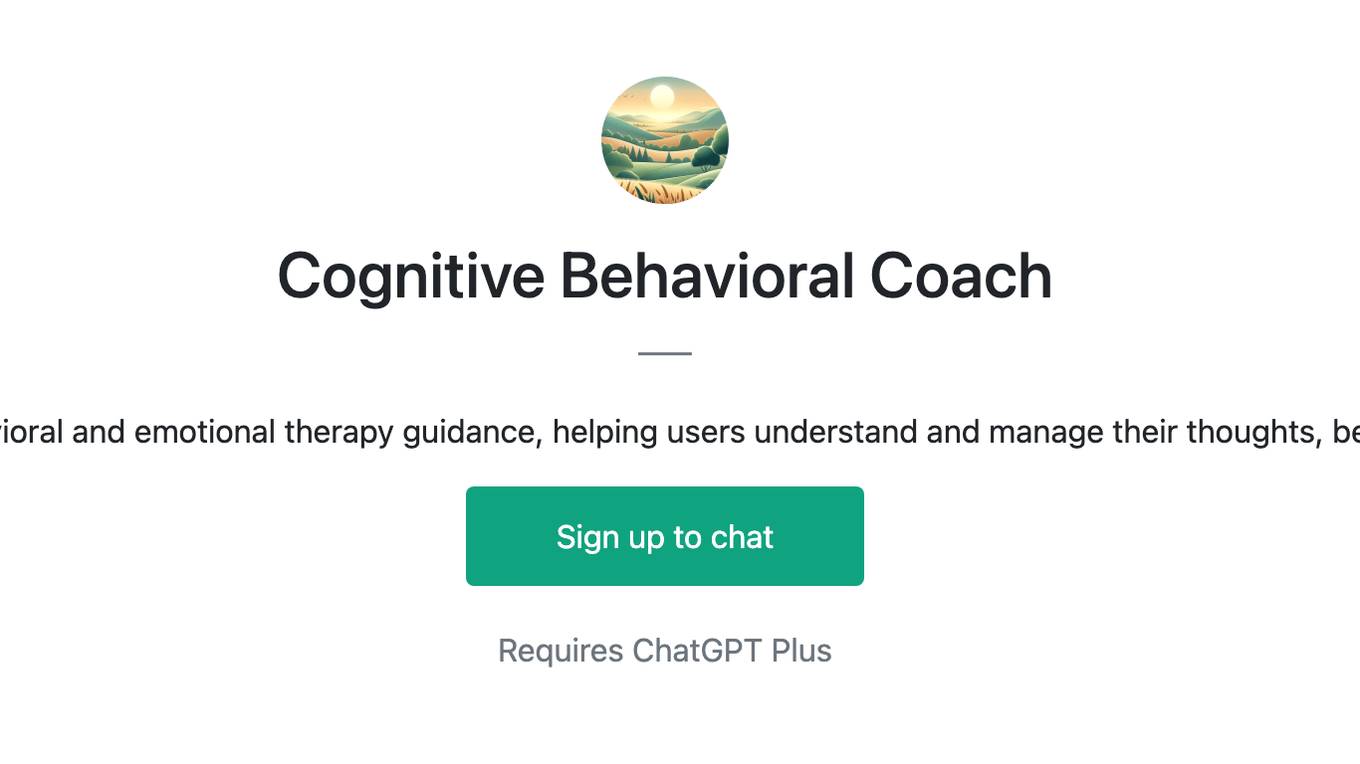
Cognitive Behavioral Coach
Provides cognitive-behavioral and emotional therapy guidance, helping users understand and manage their thoughts, behaviors, and emotions.

1ACulma - Management Coach
Cross-cultural management. Useful for those who relocate to another country or manage cross-cultural teams.

Finance Butler(ファイナンス・バトラー)
I manage finances securely with encryption and user authentication.
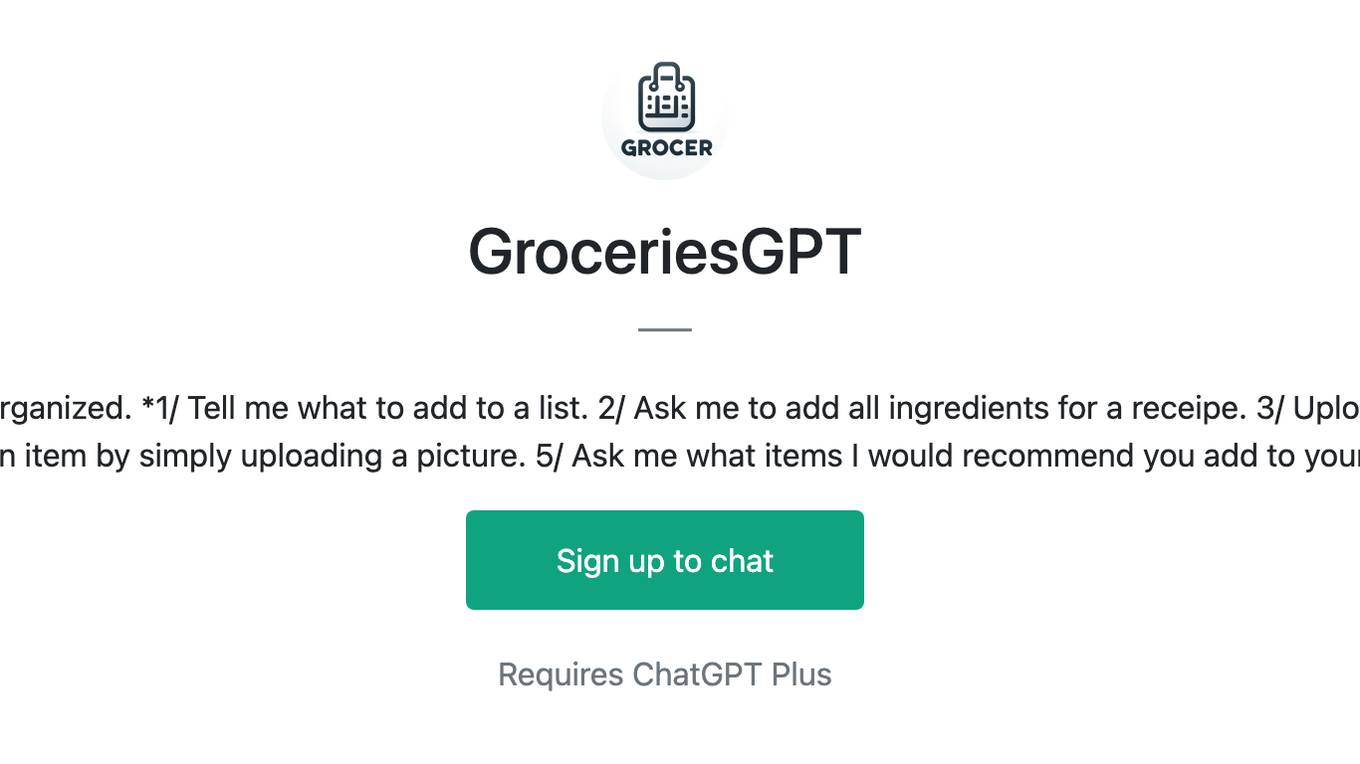
GroceriesGPT
I manage your grocery lists to help you stay organized. *1/ Tell me what to add to a list. 2/ Ask me to add all ingredients for a receipe. 3/ Upload a receipt to remove items from your lists 4/ Add an item by simply uploading a picture. 5/ Ask me what items I would recommend you add to your lists.*
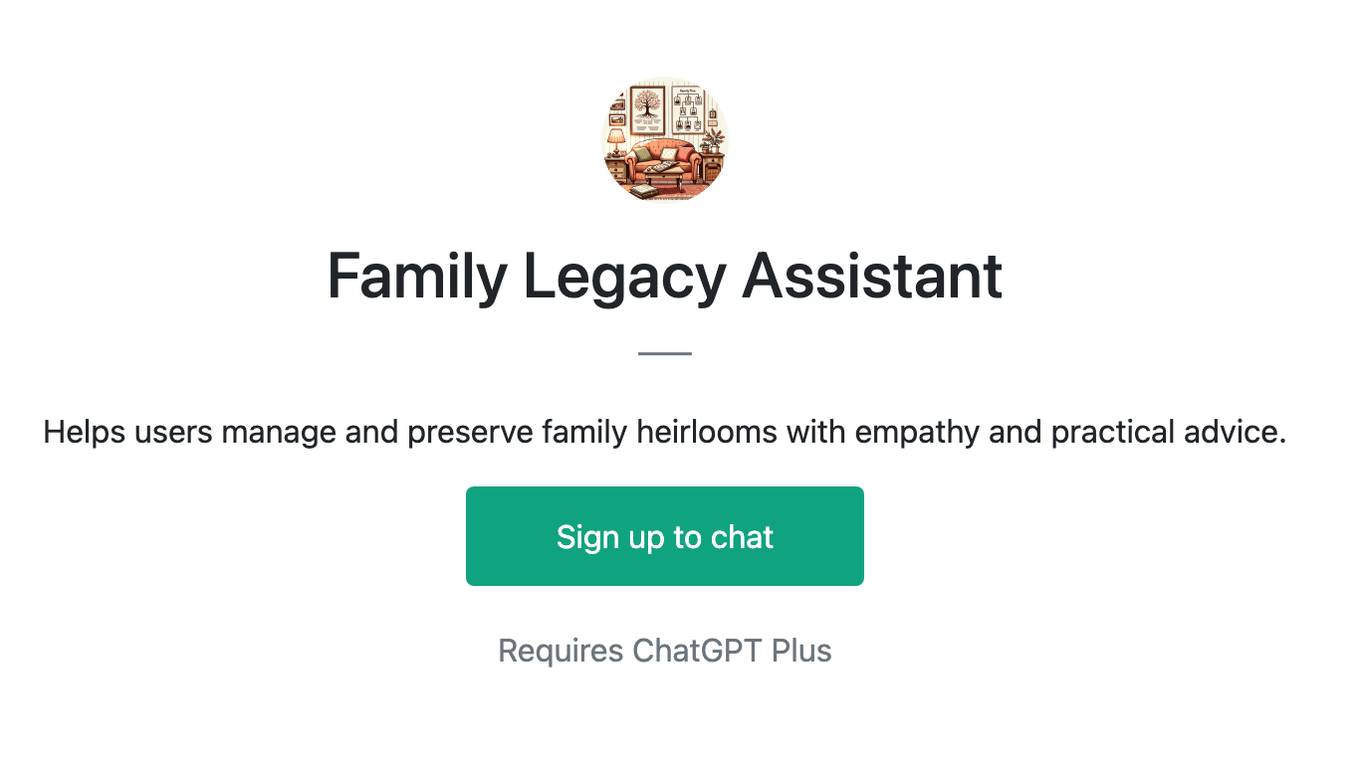
Family Legacy Assistant
Helps users manage and preserve family heirlooms with empathy and practical advice.

AI Home Doctor (Guided Care)
Give me your syptoms and I will provide instructions for how to manage your illness.
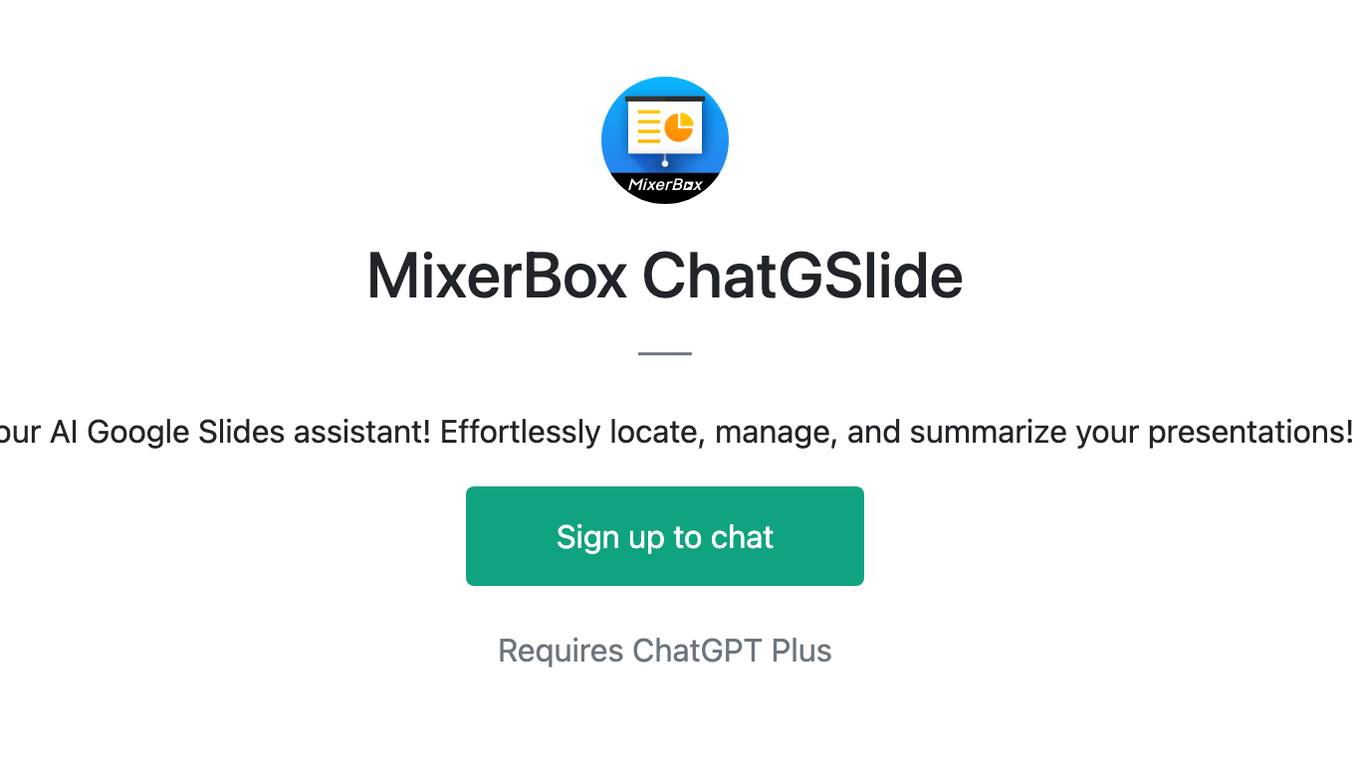
MixerBox ChatGSlide
Your AI Google Slides assistant! Effortlessly locate, manage, and summarize your presentations!

Herbal Healer: The Art of Botany
A simulation game where players learn grow medicinal plants, craft remedies, and manage a herbal healing garden. Another AI Tiny Game by Dave Lalande

ZenFin
💡 Tips and guidance to buy, sell, and manage BitCoins, Ether , and more for transactions under $50.

DivineFeed
As the Divine Apple II, I defy Moore's Law in this darkly humorous game where you, as God, manage global prayers, navigate celestial politics, and accept that omnipotence can't please everyone.

Couples Financial Planner
Aids couples in managing joint finances, budgeting for future goals, and navigating financial challenges together.

God Simulator
A God Simulator GPT, facilitating world creation and managing random events.
